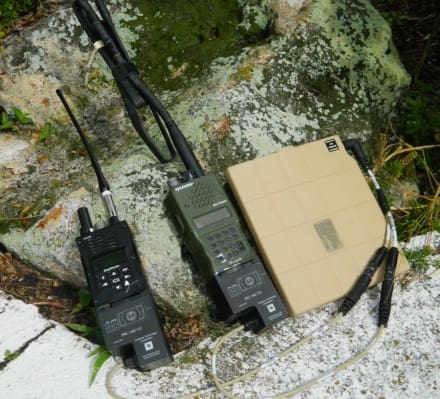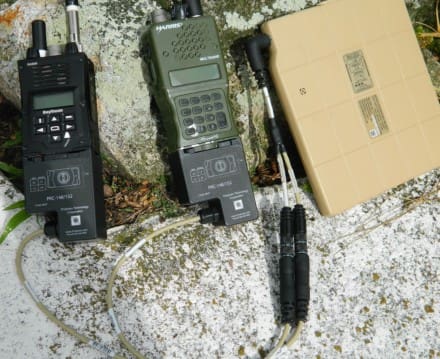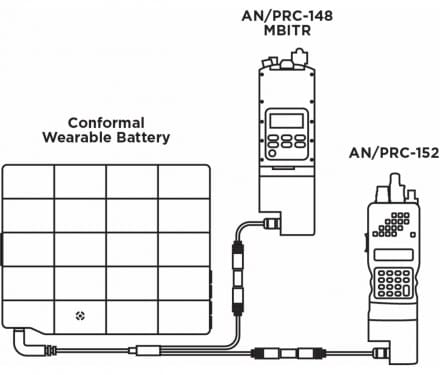We are constantly working to provide increased mission capability with a reduced battery burden. Recently, we worked with special operations end-users to develop a streamlined, vest-worn, power solution based on the issued Conformal Wearable Battery.
The Conformal Wearable Battery, or CWB, is a thin, lightweight, flexible Lithium-Ion rechargeable battery that integrates with the end-user’s load carrying equipment. It reduces the number of spare batteries the operator needs to carry, it enables the sustainment of dismounted operations in remote / austere environments, and features a state of charge indicator for quickly checking its remaining power capacity. The CWB is much safer than other common Lithium-Ion batteries – it can even be shot without bursting into flames or blowing up – and operates at temperatures ranging from -20 degrees C to 60 degrees C. The Conformal Wearable Battery was developed as part of the Nett Warrior program and is now in use with many units.
The PTX “Y-Wing” CWB-MBITR Power Assembly connects two MBITR PRC-148 or PRC-152 radios to a single CWB integrated into the user’s plate carrier or load carrying vest. Our system greatly increases radio mission time – 3x longer than a 50Wh MBTR Battery and 2x longer than a 70Wh MBTR Battery – and eliminates the additional cost of an additional hub or extra radio batteries. It also contributes to a lighter and more streamlined load carriage set-up.
If you’re at SOFIC come see the system at our booth – #2232. Otherwise, for further information contact us at Team.Room@Protonex.com
Tags: Conformal Wearable Battery, Power Management, Protonex, PTX





The biggest issue I have with the CWB system is that the flame retardant pouches for the power cells reduces the energy density to significantly less than a typical LiOn battery. At 57mAH/lb for the CWBs vs 73mAH/lb for a 58mAH MBITR battery you can carry 3.3 MBITR batteries for the weight of the CWB alone and that’s disregarding the attachment bricks and cables.
What I’d like to know is whether the charging bricks have any charge capacity–in other words, when you disconnect the CWB do you lose power to the radios? The only advantage I could see to this system is if you could run the radios without the power of the CWB for a while. This would enable you to drain the CWB down to 0% charge and somewhat make up for the poor energy density. I just did some quick math and by my calculations you’d need to be swapping MBITR batteries at 33% charge or greater in order to make up for the weight difference. Again, this is not including the cables and bricks and with those it would be 40-50%. Basically if you regularly swap MBITR batteries once they dip below half of their life then this system offers a weight savings. Otherwise it does not–so why not just carry spare batteries?